It’s always nice to visit fun places on the Great Lakes but these trips gain even more significance if the visited locations are rooted in history. If you’re looking for some cultured fun that’ll teach you about the past, then look no further.
Here are some excellent historical sites you can check out while boating on the Great Lakes. Check them out.
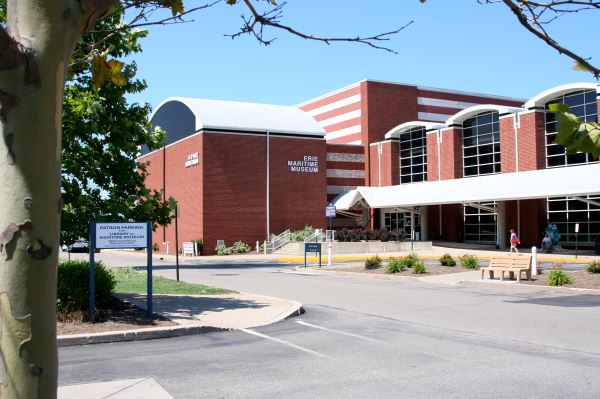 Museums
Museums
First off is the Erie Maritime Museum on Lake Erie. This museum first opened its doors in 1988 on May 21 when it accompanies the efforts to redevelop Erie’s historic Bayfront district. The Erie Maritime Museum made its home in the Pennsylvania Electric Company’s former East Front Street generator station and now it seeks to tell the story of Erie’s maritime heritage.
Its centerpiece exhibit, the US Brig Niagara, will not disappoint. You’ll also enjoy how the museum highlights the region’s War of 1812 narrative, it’s fishing and shipbuilding roots, and more.
This maritime museum welcomes boaters of all abilities and background to experience and encounter the Great Erie region’s maritime history and heritage. This also includes civilian activity and innovation and military service, along with Pennsylvania’s contributions to the maritime industry and stewardship of the Great Lakes. So next time you’re out boating on Lake Erie, be sure to pay the Erie Maritime Museum a visit.
Another great museum is the Old Lighthouse Museum on Lake Michigan’s south shore. This museum opened on June 9, 1973, in a historic old lighthouse that served as a guiding light for Great Lakes sailors for almost 200 years.
Due to its long history, the old Lighthouse was placed on the National Register of Historical Places in 1974 due to its historically significant architecture and association with lake transportation. Then the Pierhead Light was added to the Register in 1988 during a campaign to restore the structure. In 2007, the Lantern Room was then made accessible. These projects were all made possible by the Questers, the Hoosier Lighthouse Club, the Lake Michigan Coastal Program, the Indiana Department of Natural Resources, and the National Oceanic and Atmospheric Administration.
Today, the light from this old lighthouse is still used to help guide navigation, however, the LED light is fully automated. You’ll be sure to learn a ton during your visit to the Old Lighthouse Museum.
Monuments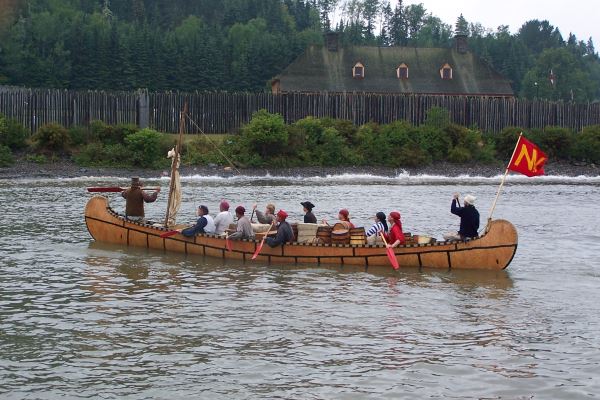
Then if you’re ever near Grand Portage, Minn., when you’re boating Lake Superior, be sure to check out the Grand Portage National Monument. This site includes a reconstructed fur trade depot, an Ojibwe Village exhibit and an 8.5-mile historic trail.
The Grand Portage National Monument allows you to learn about the past in order to understand the present better. You can discover the partnership of the Grand Portage Ojibwe and the North West Company during the North American fur trade. You can also follow pathways into the past where you can experience the sights and smells of a bustling depot. The fur depot is reconstructed in the original’s exact location.
You’ll also hear the beat of the drum echo ever Lake Superior, or as they call it in the Ojibwe language: Gichigami. There’s plenty to learn and do at the Grand Portage National Monument, so you’re not going to want to miss it.
Brock’s Monument on Lake Ontario is another fantastic monument to put on your travel list. You can find the monument in Queenston Heights Park in Queenston, Upper Canada. There you can enjoy a self-guided tour of the Battle of Queenston Heights at the foot of the monument. The tour includes a climb to the top of Brock’s Monument where you’ll find a magnificent view of Lake Ontario in the north and Niagara Falls in the south.
There were many decisive battles during the War of 1812 along both sides of the Niagara River. On October 13, 1812, right before down, American troops crossed the river and made their way up to a hidden path on the Niagara escarpment so they could cut the British supply line leading to the west.
Major-General Isaac Brock, Commander-in-Chief of British forces in Upper Canada was at Fort George in Newark (now Niagara-on-the-Lake). On that morning, Brock raced to Queenston and was fatally wounded while leading his troops in an effort to retake the Heights of Queenston.
There wasn’t much hope until General Sheaffe marched with his men of the 41st Regiment and the militia and Native forces. With a single line charge, the Americans were routed, ensuring their victory.
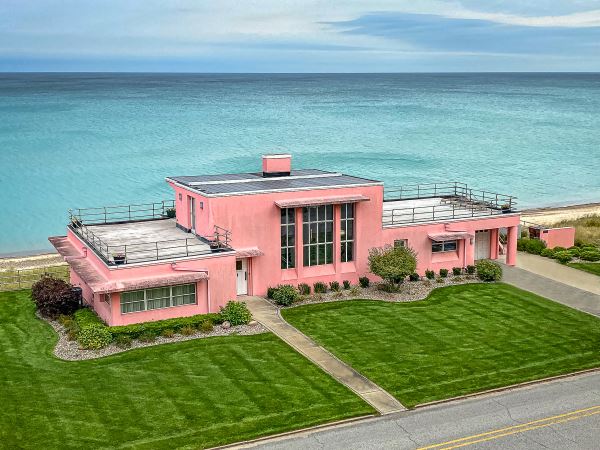 Impressive Sights
Impressive Sights
The Port Erie Bicentennial Tower in Erie, Penn., is another spot you’ll want to check out on your historic journey. This tower is one of Lake Erie’s iconic landmarks, boasting gorgeous panoramic views.
From the Bicentennial Tower, you’ll be able to see fantastic views of Lake Erie, Presque Isle State Park and downtown Erie. The tower signifies the city’s bicentennial year 1996. The height of the first observation deck is 17 feet and the height of the second observation deck is 138 feet. You’ll find the Port Erie Bicentennial Tower at the end of State Street on Dobbins Landing.
Then when you’re in the Lake Michigan area, be sure to swing by the Century of Progress Homes in Porter, Ind. The 1933 World’s Fair in Chicago offered a hopeful vision to millions of people caught in the Great Depression. It gave them a glimpse into the futuristic changes that waited for them on the horizon.
Robert Bartlett, the developer, brought a dozen buildings from the fair including the five from the Homes and Industrial Arts housing exhibit that comprise the Century of Progress Historic District. The buildings were then moved to Beverly shores, a resort community he was developing in Indiana. You can now visit the cluster of the five landmark homes on the annual Century of Progress home which is sponsored by Indiana Landmarks in partnership with the National Park Service.
You’ll be able to visit the first floors of the Florida Tropical, Rostone, Armco-Ferro and Cypress houses on the tour. It’s a unique and historic experience visiting these novel houses.
Bridges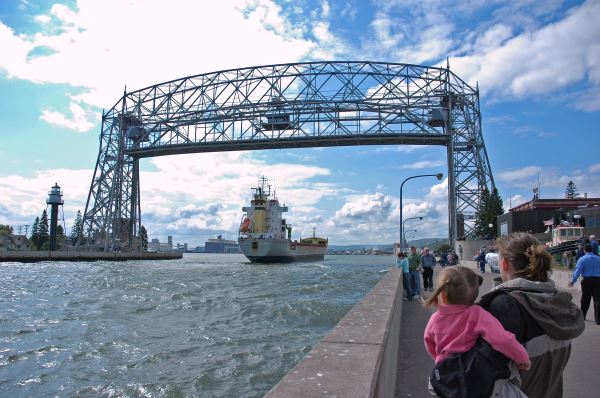
If you like bridges then you should also be sure to see the Duluth Aerial Lift Bridge in Duluth, Minn., off Lake Superior. This bridge is a span-drive configuration movable lift bridge that was built from 1901 to 1905 and then modified in 1929.
You’ll find the bridge spanning the Duluth Ship Canal which connects the city of Duluth with Minnesota Point. Thomas F. McGilvray and C.A.P. Turner designed the bridge while the Modern Steel Structural company built the bridge.
The original 1901 to 1905 aerial bridge featured a gondola car suspended by an inverted steel tower from the truss’s underside. You’ll find this truss is still extant as a structural member of the bridge.
The bridge was modified in 1929 by adding an elevating roadway to replace the traversing platform. This lengthened the steel towers and incorporated new structural support within the confines of the old towers that carry the counterweight roadway. The Duluth Aerial Lift Bridge is a significant and rare kind of bridge engineering, making it a great resource in the Duluth Ship Canal Historic District.
Another beautiful and significant bridge is the Blue Water Bridge on Lake Huron. This bridge is a major international crossing over the St. Clair River on Lake Huron’s southern end.
You’ll find it located between Port Huron, Mich., and Point Edward, Ontario, connecting Interstate 94 and Interstate 69 with Highway 402. The Blue Water Bridge is one of the fastest connections between the Midwest and Ontario in addition to the Northeast United States.
This bridge crossing is large and complex, composed of toll and inspection plazas on both sides of the border where you pay to cross and then interact with the inspection agencies.
Blue Water Bridge has two unique spans. The original Blue Water Bridge, which opened in 1938 and was renovated in 1999, consists of a three-lane westbound bridge. Then the second Blue Water Bridge, which features three lanes of eastbound traffic, is a beautiful modern bridge that opened in 1997.
The state-of-the-art facilities make this bridge one of the most modern and smooth crossings in the world. It’s definitely worth a visit.
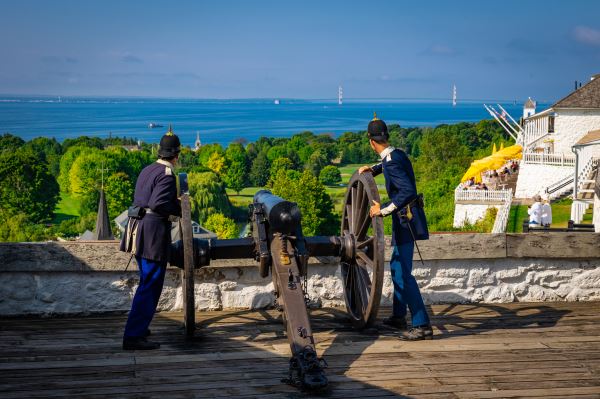 Forts
Forts
While you’re on Lake Huron be sure to check out Fort Mackinac. Visiting this historic site is like stepping back in time as you hear the cannons blast, the rifles fire and the soldiers march. This fort features the oldest building in Michigan along with 13 other historical structures.
Their exhibits explain everything from battles to military training to medical treatment and family life withing the fort. The fort was also more than just a military outpost since Fort Mackinac since it served as a home for solders and their families. In time, it became the headquarters for Mackinac National Park as well. Now tourists visit the great fortress on the bluff.
Fort Mackinac also has demonstrations and tours held by costumed interpreters scheduled at various times throughout the day. It’s an exciting location that brings history to life so be sure to pay it a visit if you can.
While we’re on the subject of forts, don’t forget the Fort Ontario State Historic Site. At this location, you’ll see the star-shaped fort dating back to the early 1840’s with 1863 to 1872 improvements.
In the Fort Ontario State Historic Site you’ll find two guardhouses, a storehouse, a powder magazine, an Army office building and unfurnished officer’s quarters, enlisted men’s barracks, along with videos, exhibits and ramparts which feature some fantastic views of Lake Ontario.
The current Fort Ontario is actually the fourth one, built on the ruins of the three earlier fortifications which were the location of three French and Indian War battles and then two War of 1812 battles.
It was also occupied by the U.S. Army in World War II. From 1944 to 1946, Fort Ontario was the only refugee camp in the United State for mostly Jewish victims of the Nazi Holocaust.
Additionally, there’s a post cemetery containing 77 graves of officers, soldiers, women and children who served at Fort Ontario during war and peace. The cemetery is open year-round from dawn until dusk. Fort Ontario was transferred to the State of New York in 1946 and it housed World War II veterans and their families up until 1953. In 1949 it opened as a state historic site. You won’t want to miss this one on your historic boat tour.
LAKE ERIE
Erie Maritime Museum
www.eriemaritimemuseum.org
Port Erie Bicentennial Tower
www.porterie.org
LAKE HURON
Blue Water Bridge
www.michigan.gov
Fort Mackinac
www.mackinacparks.com
LAKE MICHIGAN
Century of Progress Homes
www.nps.org
Old Lighthouse Museum
www.mchistorical.org
LAKE ONTARIO
Brock’s Monument
www.niagarafallstourism.com
Fort Ontario State Historic Site
www.parks.ny.gov
LAKE SUPERIOR
Duluth Aerial Lift Bridge
www.dot.state.mn.us
Grand Portage National Monument
www.exploreminnesota.com

